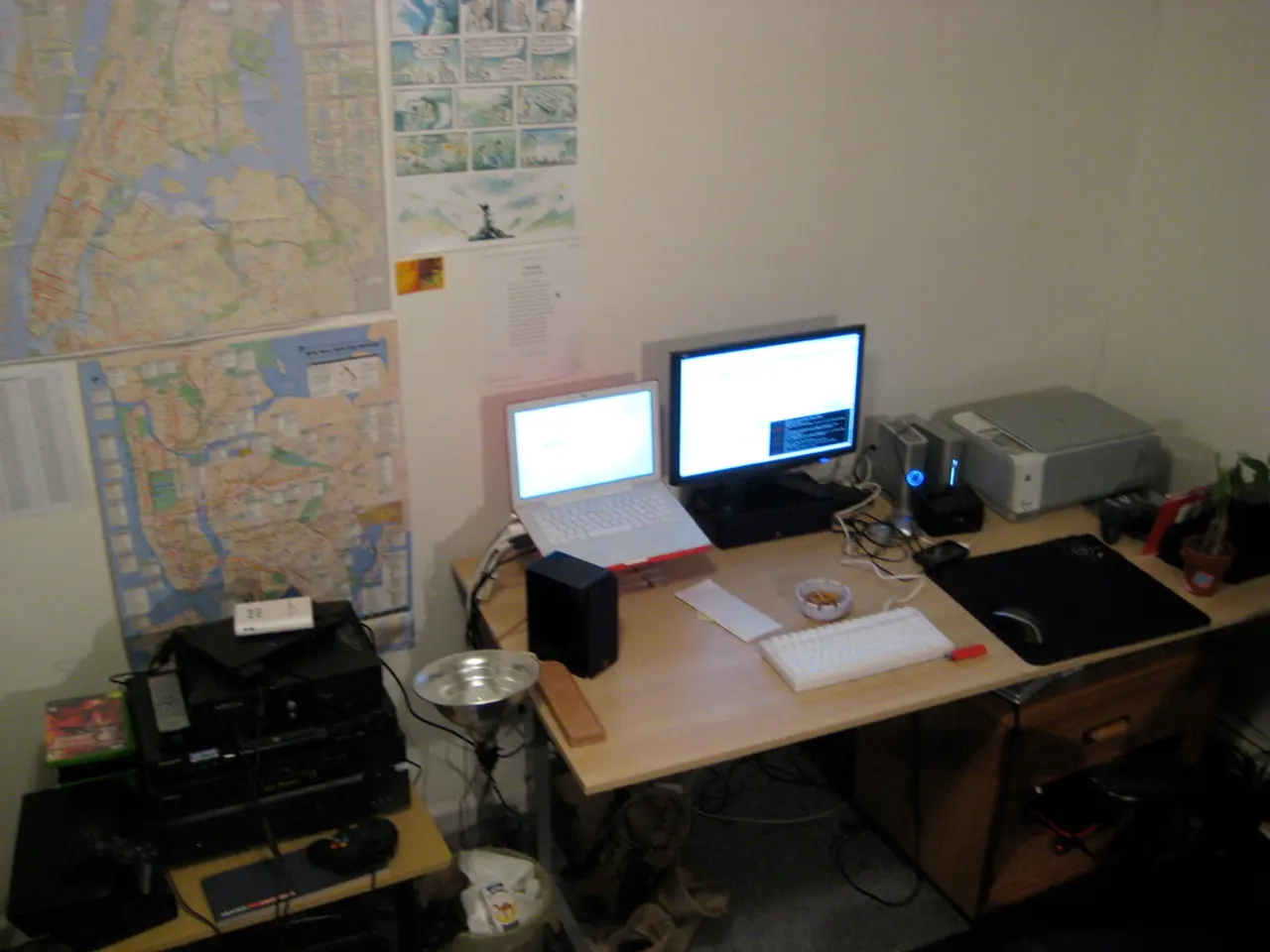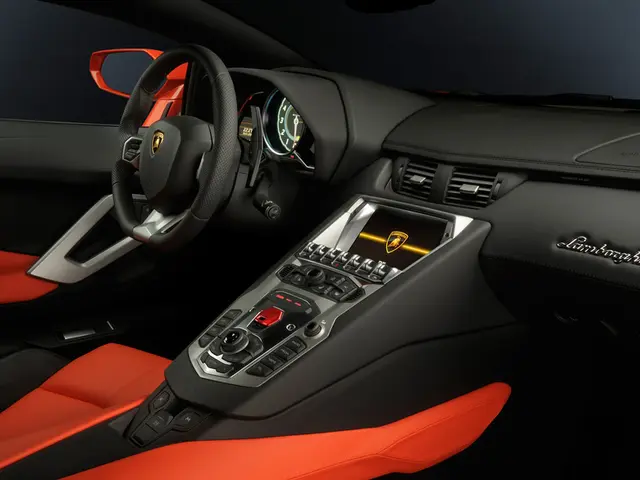Cyberdeck Yields Pi-Driven Productivity in Vintage-Futuristic Design
Introducing the Dual-Screen RPI Dev Cyberdesk: A Retro-Futuristic DIY Masterpiece
The DIY community has once again outdone itself with the creation of the Dual-Screen RPI Dev Cyberdesk, a stunning Raspberry Pi 5-based cyberdeck designed by SECTOR 07. This unique project showcases the best of modern DIY techniques, combining 3D printing, KiCad PCB design, and Raspberry Pi computing to create a retro-futuristic cyberpunk-themed device that is both a functional tool and a statement piece.
At the heart of the Cyberdesk lies a collection of three KiCad-designed circuit boards, connected to the Raspberry Pi's GPIO pins. These boards manage all peripherals cleanly via flat-flex cables, ensuring a slim profile and minimal cable clutter. The Cyberdesk boasts a compact mechanical keyboard, a linear volume slider, four programmable macro keys, and a rotatable encoder with an integrated push-button for user interaction.
The Cyberdesk stands out for its custom electronics setup. It features dual 9-inch touchscreen panels that can rotate, offering versatility in usage. The central hub of the Cyberdesk also includes an external I2C connection and GPIO headers for attaching sensors or additional hardware, expanding its capabilities further.
To maintain stable power delivery, a USB hub with integrated power injection is used. The enclosure, made of a 3D-printed material with angular lines and bright filament, adds to the Cyberdesk's retro-futuristic aesthetic. A quick-release clamp for the Raspberry Pi makes it easy to swap SD cards or upgrade the board without the need for a screwdriver.
The creator developed a custom GUI to monitor input states and GPIO/I2C devices, enhancing interactivity and usability. All design files, including 3D printable parts and PCB schematics, are available on GitHub for community use and modification. The estimated cost for the Cyberdesk, including displays and components, is roughly $50-60 per display.
The assembly process of the Cyberdesk required methodical debugging to overcome issues such as a swapped resistor and a shorted connector. The dual 9-inch screens are mounted on custom 3D-printed rotation mounts with miniature ball bearings, offering smooth movement and firm lock in portrait or landscape mode.
The Dual-Screen RPI Dev Cyberdesk is inspired by the Pi5-powered Cyberdesk and the 2064 Cyberdesk, reflecting the ongoing innovation within the DIY community. This project is a testament to the power of open-source collaboration and the limitless potential of DIY projects in the realm of cyberpunk-inspired technology.
- This retro-futuristic Dual-Screen RPI Dev Cyberdesk, with its 3D-printed enclosure and open-source design, is not only a functional tool but also a platform for integrating various technology such as smart-home devices and gadgets through its GPIO headers and external I2C connection.
- As the DIY community continues to push the boundaries of technology, events like exhibitions and hackathons could showcase projects like the Dual-Screen RPI Dev Cyberdesk, demonstrating the seamless integration of events, technology, and smart-home devices in the context of the cyberpunk aesthetic.




